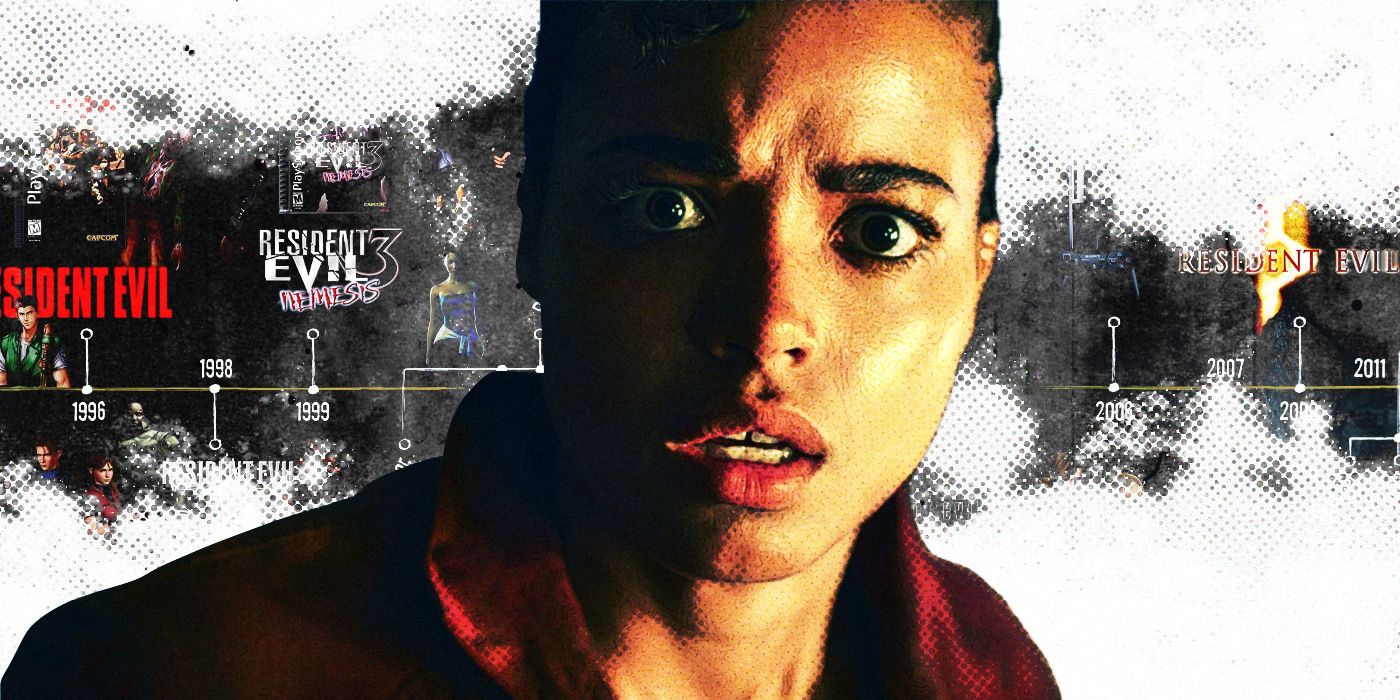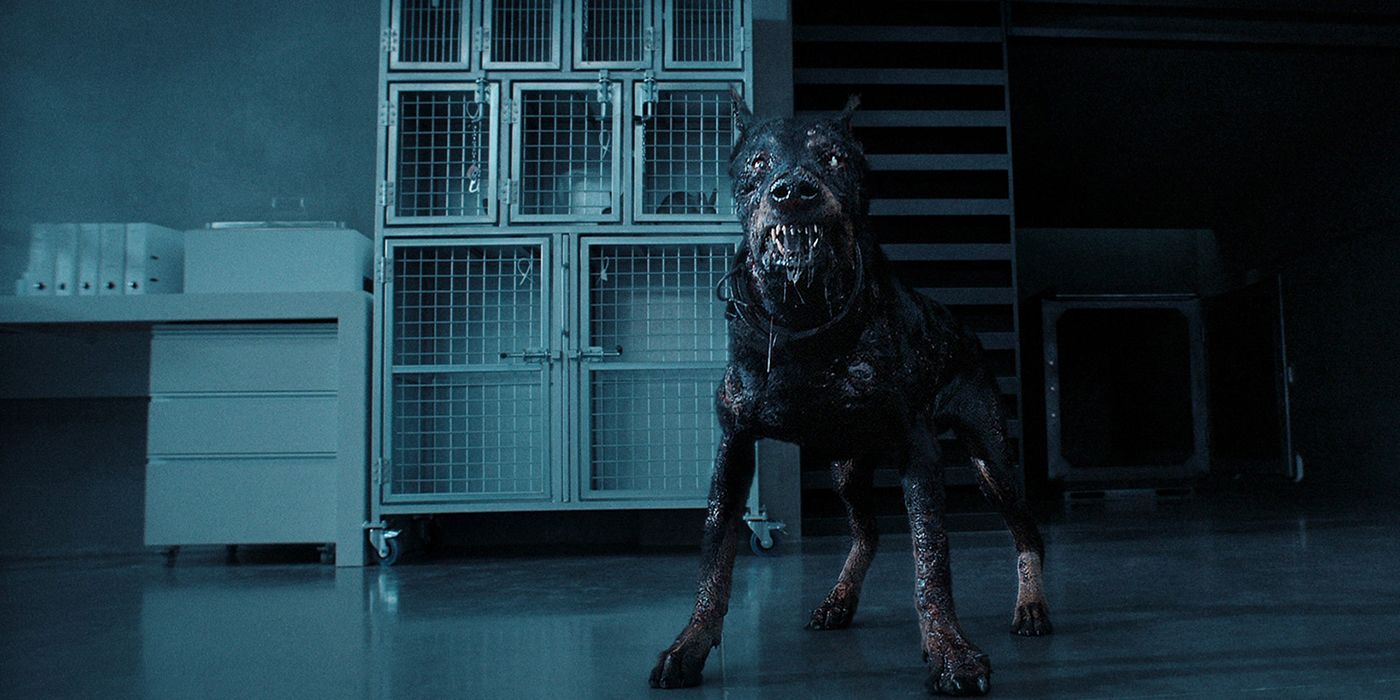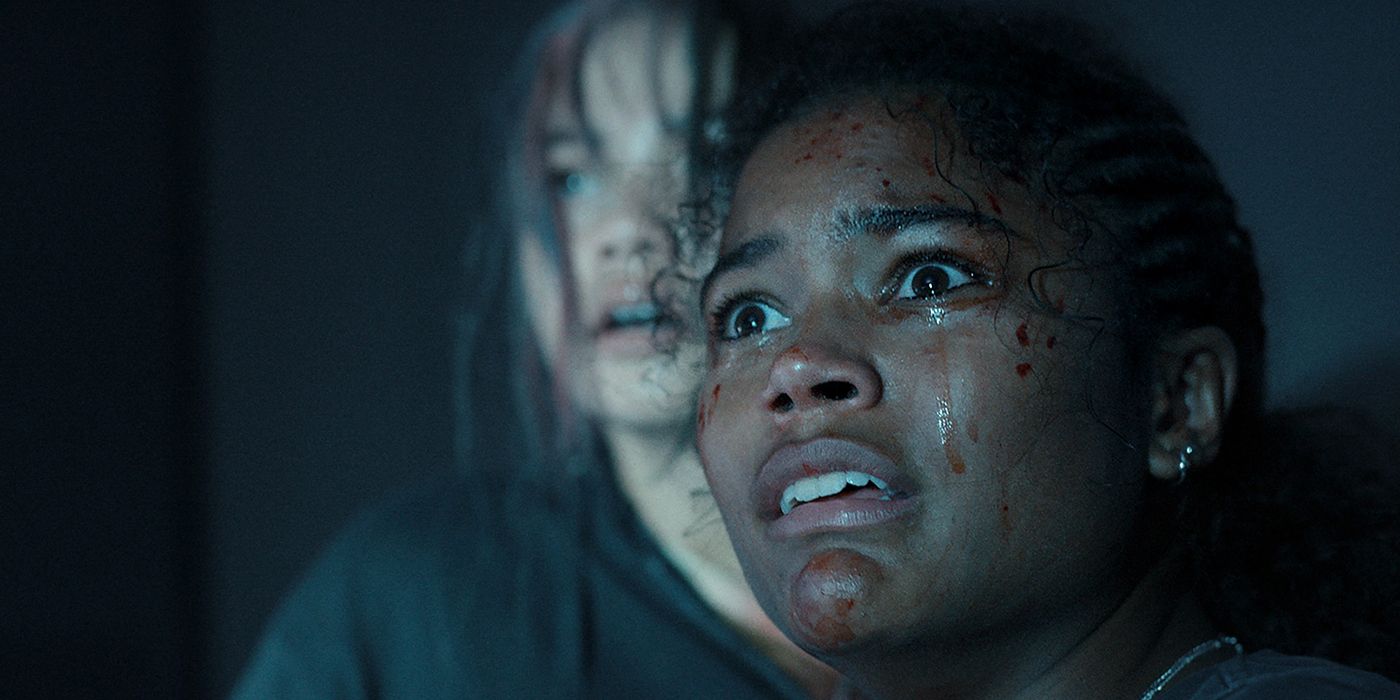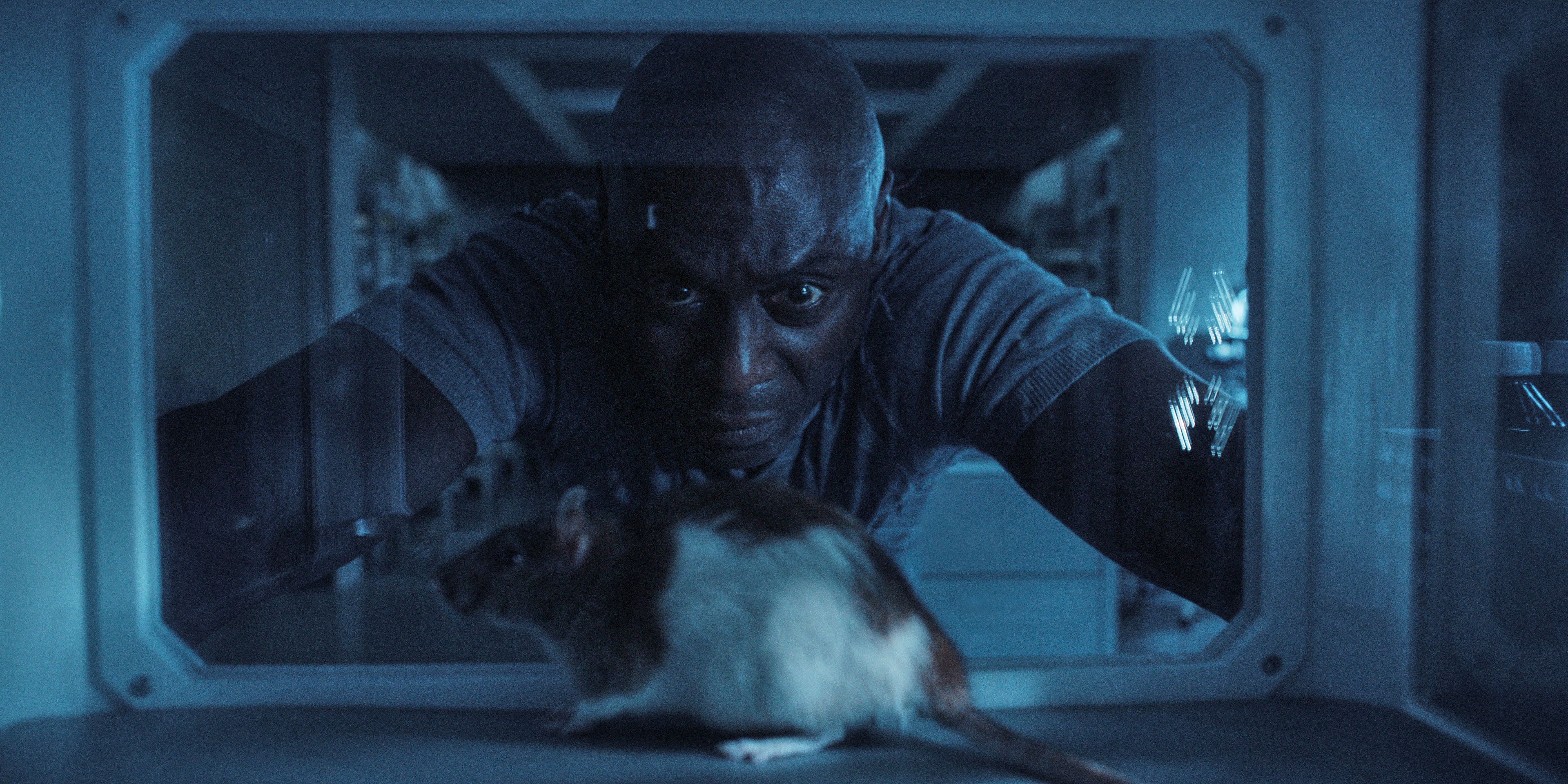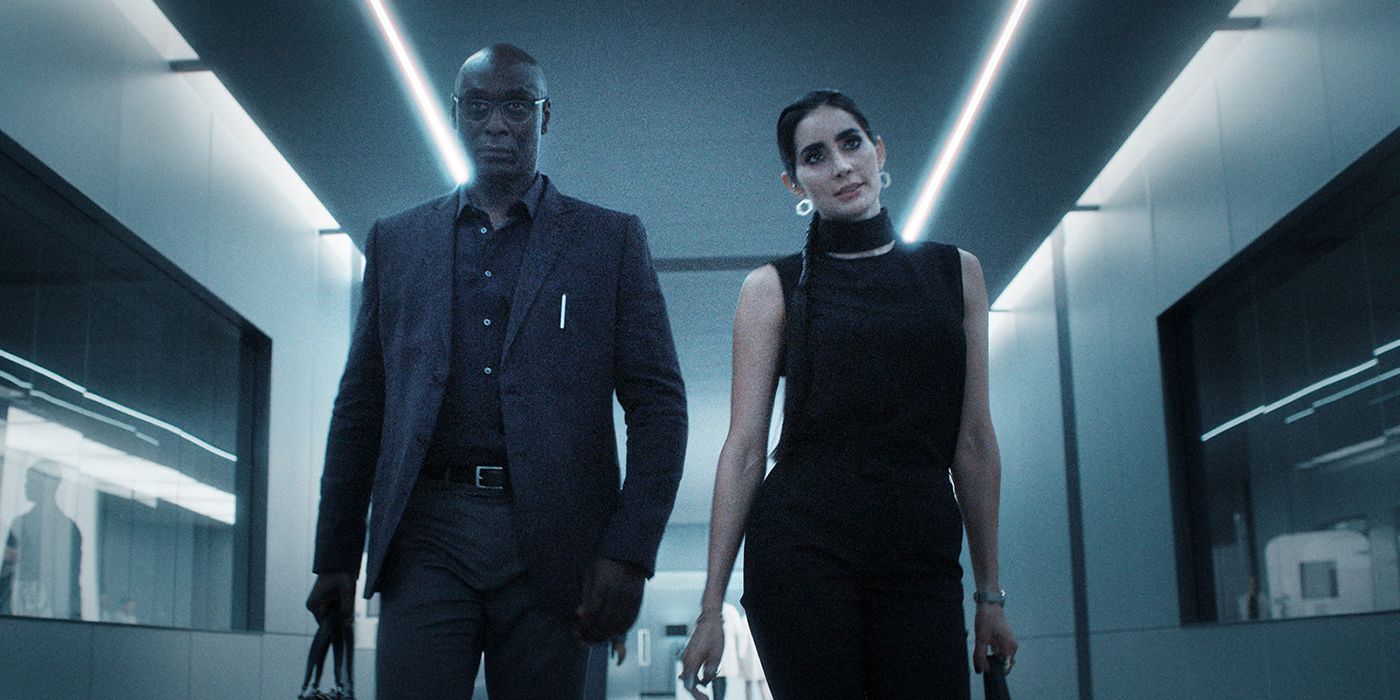Editor's note: The below article contains spoilers for Resident Evil.Instead of adapting one of the many games in the Resident Evil franchise, Netflix’s new live-action series tells an original story focused on new characters. Split into two timelines, the series follows teenaged siblings Jade (Tamara Smart) and Billie (Siena Agudong) as they get involved with a zombie outbreak in 2022. At the same time, we follow an adult version of Jade (Ella Balinska) in 2036, trying to survive in a world destroyed by mutant creatures. However, while Netflix’s Resident Evil story might be original, it tries its best to reuse some main elements of the game franchise, such as Albert Wesker (Lance Reddick), Umbrella Corporation, and the T-Virus.
While Netflix’s Resident Evil doesn’t go into many details about what happened in each game of the franchise, it leaves its fair share of clues behind it, so we can piece together how the TV show fits in the timeline. That’s because, while not addressing any game directly, Resident Evil still serves as a sequel to the main games. So now that the series is fully available on Netflix, it’s time for us to piece together how Resident Evil connects to the franchise’s timeline.
The Raccoon City Tragedy
The 2022 part of Resident Evil happens more than two decades later after the Raccoon City incident. In 1998, Umbrella lured a team of special agents known as S.T.A.R.S. to the Spencer Mansion to collect data about the creatures they’ve been developing as weapons for the U.S. government. The idea was to test if the creatures would be able to kill all the S.T.A.R.S. agents. The S.T.A.R.S. unit is led by Albert Wesker, a double agent working for Umbrella. This story is told in the franchise's first game, Resident Evil.
While the S.T.A.R.S. fight for their lives in the Spencer Mansion, an incident in the underground labs kept by Umbrella in Raccoon City caused the release of the T-Virus, leading to a zombie outbreak. Once the outbreak got out of hand and there was no hope for the city, the U.S. government ordered a nuclear assault on Raccoon City, wiping away any trace of illegal experiments. The destruction of Raccoon City got blamed on a gas leak, and for the following decades, the U.S. government would hide the existence of bioweapons from the general public. The Raccoon City outbreak is explored in multiple games, but if we think only about the mainline titles, both Resident Evil 2 and Resident Evil 3 follow the adventures of survivors trying to escape the city.
The destruction of Raccoon City is an important plot point for Netflix’s Resident Evil, confirming the show exists in the same universe where the original game trilogy occurred. The series also mentions two key characters in Resident Evil lore. When Jade and Billie investigate their father's secret labs, they find several research papers written by Dr. William Birkin. Dr. Birkin is a virologist who worked for Umbrella to weaponize the Progenitor virus, the strain that originated the T-Virus and its more potent brother, the G-Virus. Dr. Birkin eventually betrayed Umbrella, vowing to stop them from using these dangerous biological weapons. However, before he could do anything, Dr. Birkin was killed by Umbrella soldiers in a confrontation that led to Raccoon City’s zombie outbreak in Resident Evil 2.
During their investigation, Jade and Billie also find a video of Albert Wesker leading a group of soldiers to capture Lisa, a deformed woman with a massive eye on her back. That’s Lisa Trevor, the first victim of Dr. Ozwell E. Spencer, the founder of Umbrella Corporations. Lisa got injected with the Progenitor virus, leading to her mutations and the complete deterioration of her mind. Lisa was kept by Umbrella as a guinea pig, being tortured for years while the company tried to perfect their bioweapons.
So, even though Netflix’s Resident Evil doesn’t deal directly with the events of the main line of games, the series confirms most of what happened in the original trilogy is true in this universe. However, even more interesting is how Netflix’s Resident Evil draws inspiration from some of the wackier moments in the franchise.
Albert Wesker’s Lives and Death
While the original trilogy has Umbrella Corporation as its primary antagonist, the franchise expanded the lore of Albert Wesker through multiple titles. As we learn, Wesker was not only a double agent working for S.T.A.R.S. and Umbrella in the first game; he was a triple agent using his position to steal the company’s valuable research. That’s why, in later installments of the franchise, Wesker becomes a mortal enemy of Umbrella, being hunted by the pharmaceutical company. This fact is confirmed to be also true in the series when we learn that, in 2005, Umbrella raided a secret led kept by Wesker in Arklay Mountains, the same region where the Spencer Mansion is located.
Spencer created a group of super-intelligent clones in his secret lab to help build all the tools he needed to pursue his goals of replacing humanity with a more resilient species. In the games, Wesker himself is a sort of clone, created from a secret project as a prototype of a superior race of human beings. That’s why Wesker has super speed, enhanced strength, and high resistance to almost any damage. The series shows Wesker using his super speed, reinforcing how the game’s story is canon in this timeline.
The series also mentions that the OG Albert Wesker died in 2009 inside a volcano. That’s a clear reference to Resident Evil 5, where the villain meets his ultimate end at the hands of ex-S.T.A.R.S. member Chris Redfield. Resident Evil 5 takes place in West Africa, where Chris tries to stop another bioweapon outbreak. As the game reveals, the outbreak is caused by Wesker, who had been using all the knowledge he collected over the years to help the company TRICELL create a virus even more deadly than those from Umbrella.
Evelyn Marcus and Umbrella’s Rebirth
The last piece of the puzzle comes from Evelyn Marcus (Paola Núñez), the granddaughter of James Marcus, one of the founders of Umbrella Pharmaceuticals and one of the people behind the creation of the T-Virus. In the games' universe, Umbrella went bankrupt in 2004 after multiple scandals involving the company and bioweapons. Netflix’s series explores Evelyn's efforts to rebrand Umbrella by building a city in South Africa that is recognized as one of the best places to live in the whole world. Evelyn also intends to launch a miraculous new drug, Joy, that will bring billions of dollars to the company, making Umbrella once more the leader of the pharmaceutical market.
Due to the series' exploration of Umbrella history as a company that fell in disgrace and is fighting to resurface, it’s safe to say Netflix’s Resident Evil respects the canon established by the games.
Resident Evil is currently available to stream on Netflix.

